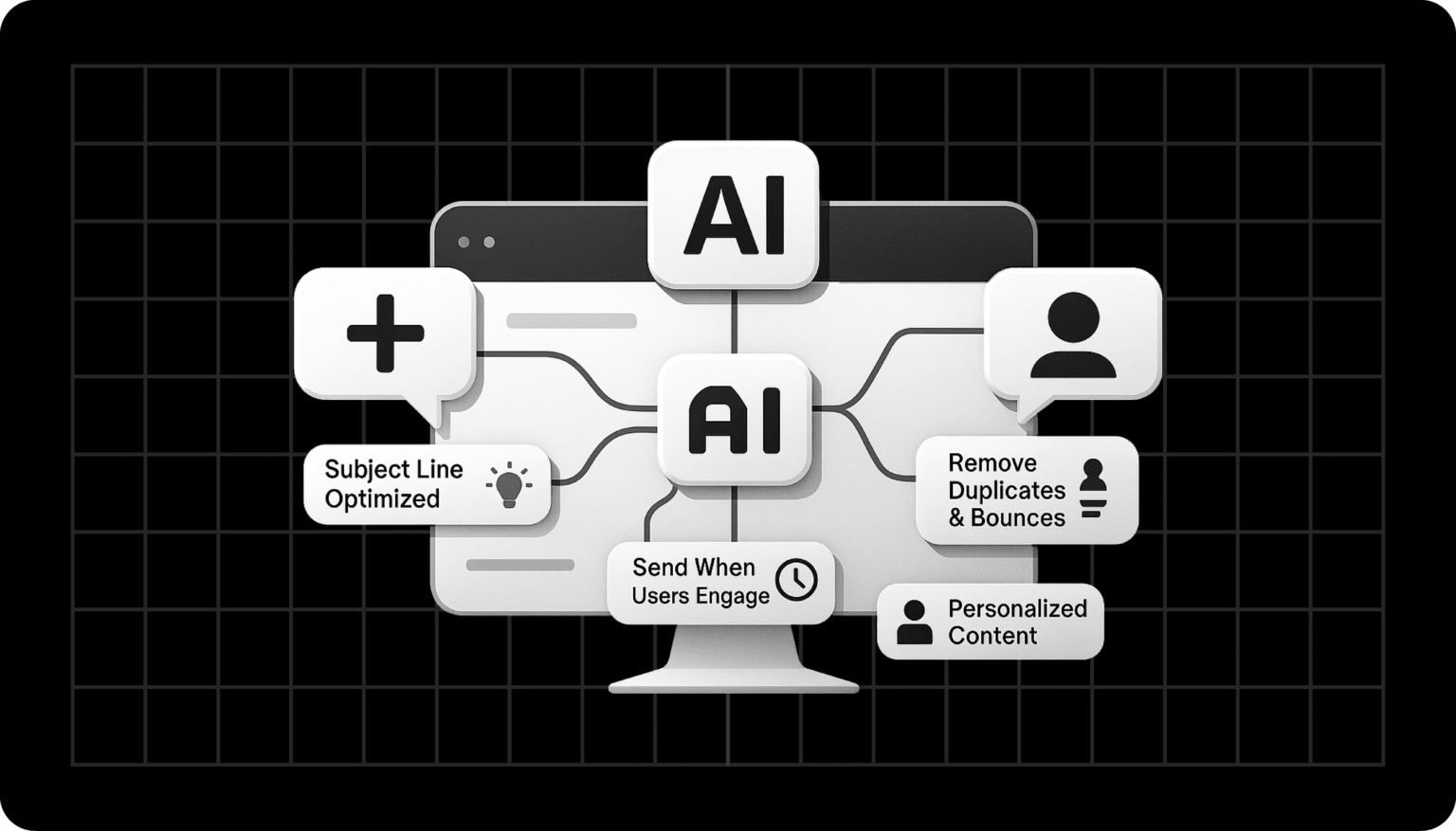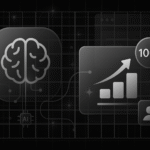AI-generated content has become one of the most widely used tools in marketing.
From startups to large enterprises, everyone is exploring how AI can draft blogs, create outlines, summarize research, and accelerate content workflows.
But with this rise in adoption comes confusion. Many brands still wonder: Is AI content actually good enough? Will it hurt my SEO? Can it replace writers? How do you use it without losing authenticity or accuracy?
If you’ve ever opened an AI tool and thought, “Is this really safe for my brand?” — you’re not alone. The uncertainty is real, and every marketer is trying to strike a balance between speed, quality, creativity, and trust.
That’s why our guide breaks down the 18 real pros and cons of AI-generated content, showing you where AI excels, where it falls short, and how to blend AI and human expertise for the best possible results.
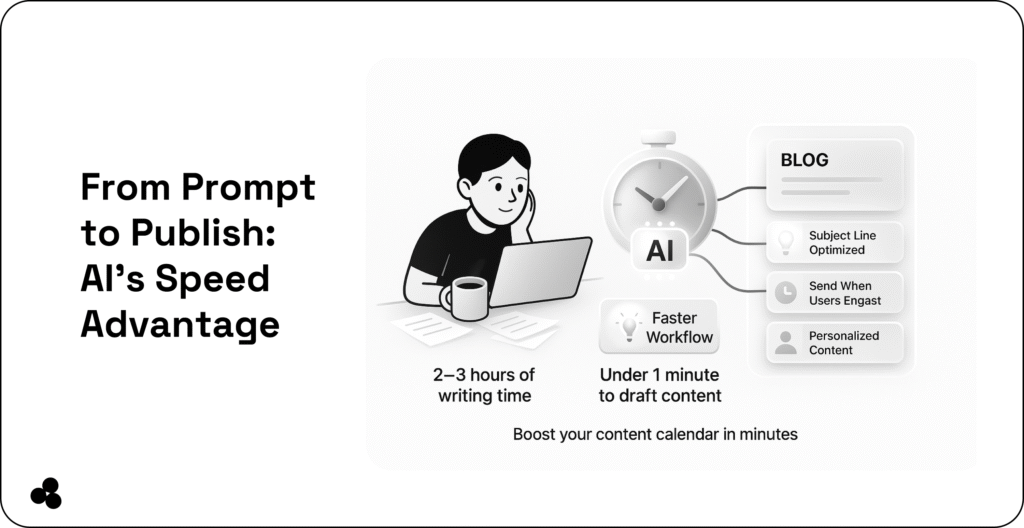
What Is AI-Generated Content?
AI-generated content refers to any text, image, or multimedia output created by machine learning models, rather than solely by humans. This includes:
- Blog posts
- Social media captions
- Product descriptions
- Research summaries
- Job descriptions
- Emails
- Ad copy
- Website content
- Scripts
- Legal templates (see AI Contract Generator)
Tools like ChatGPT, Gemini, Claude, Byword.ai, and platforms such as Penman or the Paraphrasing Tool help you accelerate content workflows while maintaining consistency.
However, AI works best when paired with human judgment, structure, and expertise—especially in terms of accuracy and brand authenticity.
The 18 Pros and Cons of AI-Generated Content
Below is the full breakdown with explanations, use cases, and tips.
9 Advantages of AI-Generated Content (With Examples 👍)
1. Speed & Efficiency
AI can produce content in seconds — blog drafts, outlines, product descriptions, emails, scripts, you name it.
Why this matters:
Lean teams or solo creators can publish more frequently without burning out.
Example:
A small real estate agency wants to publish market updates on a weekly basis. Instead of spending 5–6 hours writing each post, they can generate a draft using an AI writing tool, refine it in an hour, then publish.
Tip: Let AI create the first draft → you refine it with human expertise.
2. Cost-Effective for Scaling
Human-written content is essential, but it’s expensive to scale quickly. AI enables teams to maintain consistency without incurring excessive costs.
Example:
A startup launching 200 new product SKUs can generate descriptions with AI, then lightly edit — saving thousands.
Worthy Read:
👉 AI for Content Marketing
👉 Structured Content Guide
3. Great for Repetitive & Data-Driven Tasks
AI excels at identifying patterns: summaries, lists, definitions, FAQs, SEO outlines, and structured content, among others.
Example:
You can gather 50 customer reviews and request a “common issues summary” for your customer success team.
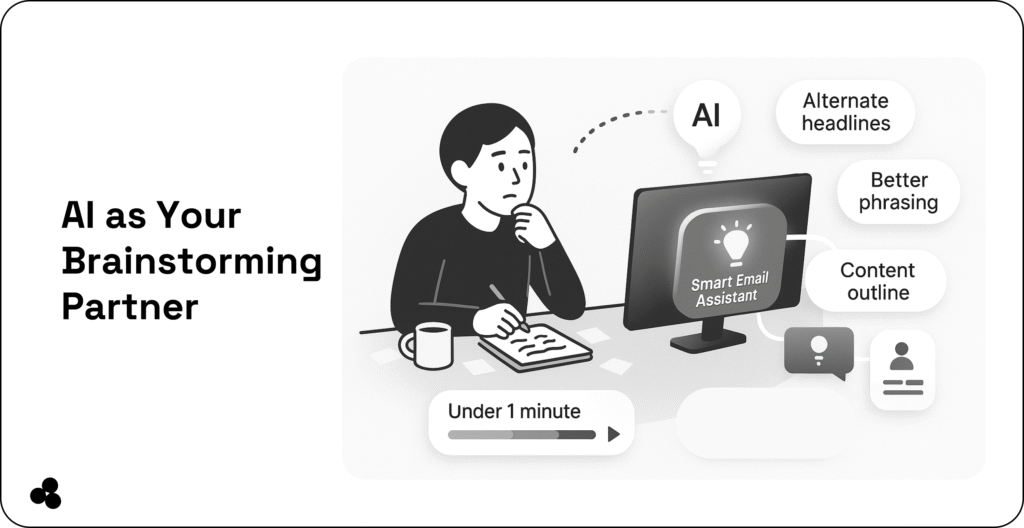
4. Helps Beat Writer’s Block
AI tools (and even paraphrasing tools) are fantastic idea engines.
Example:
A writer struggling with an intro can generate five options, mix & match, and craft something unique.
Worthy Read: 👉 AI Writing vs Traditional Writing
5. Supports Multilingual Expansion
AI can translate or adapt content for new markets.
Example:
A SaaS company entering Asia can utilize AI for initial translations, then pass them to native speakers for refinement.
6. Consistent Tone & Formatting
AI remembers patterns better than humans — it can format 100 articles using the same section structure.
Example:
Teams using AI to keep every “How-To Guide” identical in format AND SEO structure.
7. Useful for Research & Content Ideation
AI can synthesize trends, generate content clusters, and compare opposing viewpoints.
Example:
“Give me all the key differences between AI and traditional writing styles.”
8. Faster A/B Content Testing
Do you need two versions of a landing page? AI can make them instantly.
Example:
A marketing team can generate 10 ad variations and keep only the top performers.
Check out: 👉 Tools for Real Estate Agents
9. Integrates Easily with Existing Workflows
AI can fit into CMS systems, content ops workflows, CRM platforms, and more.
Disadvantages of AI-Generated Content (With Real Examples ⚠️)
1. Risk of Inaccuracies (“Hallucinations”)
AI can produce false facts with a high degree of confidence.
Example:
Asking for a “list of 2025 marketing laws” might result in AI inventing laws that don’t exist.
That is why Google emphasizes expert oversight, even in its EEAT documentation.
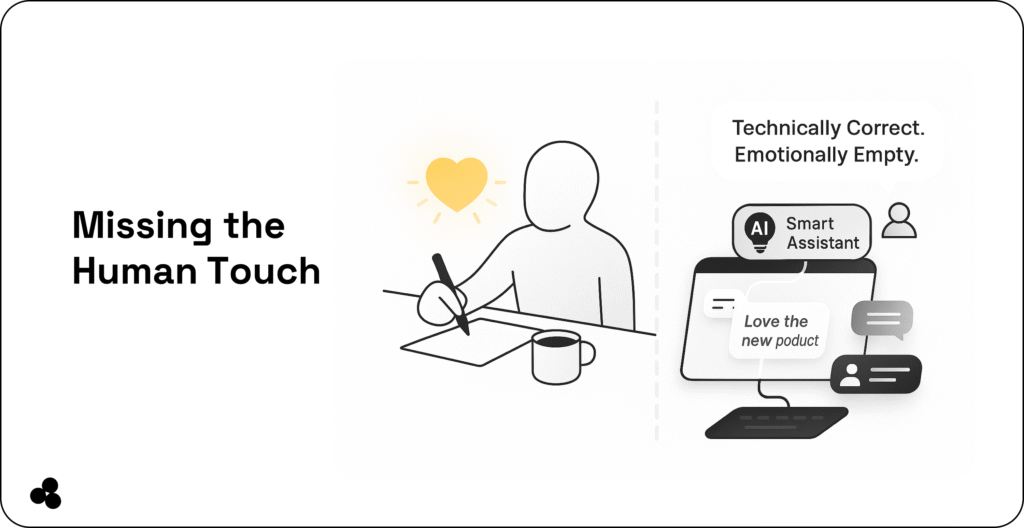
2. Generic or Overly Similar Writing
AI patterns tend to sound similar, especially when you don’t customize prompts.
Example:
If 20 brands in the same niche all use the same tool, their blogs may resemble each other, hurting differentiation.
3. Weak at Producing New or Original Insights
AI learns from past content — it doesn’t invent new research or firsthand experience.
Example:
AI can’t write a proper “2025 case study” unless you give it real data. It will generalize or make assumptions.
4. SEO Risks When Overused
AI alone does not violate Google rules, but:
- thin content
- unedited AI text
- inaccurate claims
- duplicate ideas
Do hurt rankings.
Example:
Publishing 20 AI-generated listicles without adding your own insights could trigger quality issues.
5. Lack of Brand Voice & Emotional Depth
AI can often miss nuance, particularly in humor, regional slang, and storytelling details.
Example:
A skincare brand targeting Gen Z may want a playful, meme-driven style. AI may create bland or overly formal text unless it is well-guided.
6. Requires Human Editing (Time + Skill Needed)
AI reduces writing time, but increases editing time, especially for long-form content.
Example:
A 3,000-word AI article might take 45 minutes to generate, but 2 hours to fact-check, refine, and humanize.
7. Ethical Questions & Reader Skepticism
Many audiences can spot “AI-sounding” content — and some dislike it.
Example:
A reader who sees repetitive phrasing may question reliability and trustworthiness.
8. Potential Copyright Issues
While rare, AI may unintentionally produce text too similar to the source material.
Example:
Asking AI to “write like this specific article” could generate phrasing that mirrors the original too closely.
9. Limited Understanding of Niche Expertise
AI struggles with specialized fields, such as medicine, law, engineering, and science.
Example:
Writing a legal contract with AI alone is risky, which is why tools like the AI Contract Generator function as helpers, not replacements.
Should You Use AI for SEO? (Yes—But With Rules)
AI content can rank well if it meets quality standards. This is where Google’s EEAT principles come in.
Google’s View on AI Content & Why EEAT Matters
Google has made it clear that AI-generated content is allowed, but ranking depends on:
- Accuracy
- Trustworthiness
- Experience-driven insights
- Human review
- Authoritativeness
- Originality
AI can enhance efficiency, but you must contribute your expertise, personal insights, and accurate information.
Best Real-World Use Cases for AI Content
Here’s where AI content works extremely well:
- Blog outlines & first drafts
- Topic brainstorming
- Repurposing existing content
- Multilingual translations
- Social media post ideas
- Research summaries
- Writing job descriptions 👉 Job Description Writing Guide
- Product descriptions
- Email drafts
- Video and podcast scripts
Where AI does not perform well:
- Medical or legal documents (without human validation)
- Opinionated expert analysis
- Deep investigations
- Content requiring firsthand experience
- Highly nuanced emotional writing
The Hybrid Strategy: Humans + AI = Winning Formula
The best results come from combining AI speed with human expertise:
- AI drafts
- Human expert adds insights
- AI formats
- Humans fact-check and refine
The hybrid workflow is what consistently ranks well on Google.
AI Content Works Best When It’s Human-Guided
AI-generated content is a powerful tool—but only when it’s used wisely. Brands that win in 2025 combine AI efficiency with human expertise to create content that is:
- Faster to produce
- More scalable
- Consistent
- Insightful
- Trustworthy
- Search-friendly
Use AI to accelerate your workflow, not replace your expertise, and you’ll create content that is both high-quality and high-performing.
